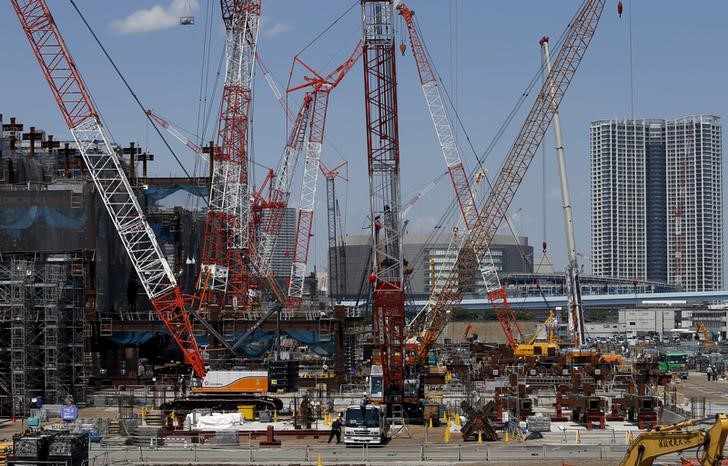By Tetsushi Kajimoto
TOKYO (Reuters) - Japan's economy probably slipped into technical recession in July-September due to a drop in capital spending and soft external demand and private consumption, a Reuters poll showed.
The world's third largest economy is seen to have contracted at an annualised rate of 0.2 percent in the third quarter, following a 1.2 percent contraction in April-June, the poll of 19 economists showed. A technical recession is defined as two consecutive quarters of economic contraction.
This would translate into a quarterly contraction of 0.1 percent, keeping policymakers under pressure to deploy monetary and fiscal stimulus in the coming months to firms up the flagging economy.
Despite slowing growth and inflation, the Bank of Japan is in no mood to ease policy further anytime soon, arguing that the economy remains on track for a moderate recovery although a China-led global slowdown poses large risks to the economy.
Analysts are closely watching the third-quarter gross domestic product (GDP) data for clues on the possible size of any additional fiscal stimulus.
Prime Minister Shinzo Abe's government is considering compiling an extra budget for the current fiscal year to shore up demand.
The GDP data is due to be released by the Cabinet Office on Nov. 16 at 0850 JST (2350 GMT Nov. 15).
"The economy continued to stall in July-September as business investment weakened while companies tried to shed a pile of inventory," said Yusuke Shimoda, an economist at Japan Research Institute.
"We expect a return to growth in the current quarter on improving corporate profits and household income. But the pace of recovery will be modest as China's slowdown weighs on business and consumer sentiment."
The GDP data is expected to show private consumption, which accounts for about 60 percent of the economy, grew 0.4 percent in July-September, after a 0.7 percent decline in the previous quarter.
External demand contribution to GDP likely came to zero, after it shaved 0.3 percentage point off the second-quarter GDP.
Capital spending probably fell 0.4 percent quarter-on-quarter in July-September, marking two straight quarters of declines.
Despite strong business investment plans shown by the BOJ's tankan quarterly survey, companies have been slow to spend their record cash piles to boost capital expenditures as China's slowdown clouds the outlook.

Separate data by the Cabinet Office out on Nov. 12 at 0850 JST (2350 GMT Nov. 11) is likely to show core machinery orders, a leading indicator of capital spending, grew 3.3 percent month-on-month in September, marking the first gain in four months.